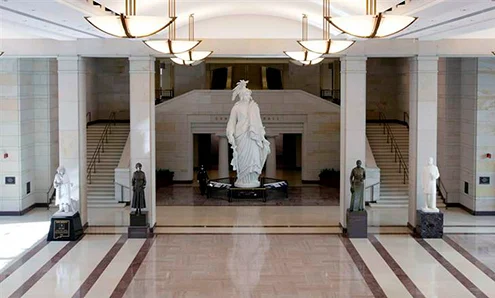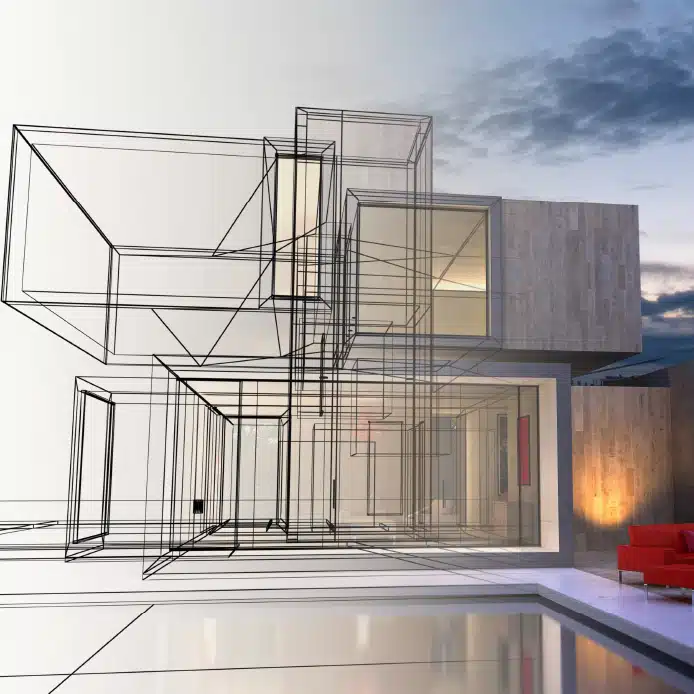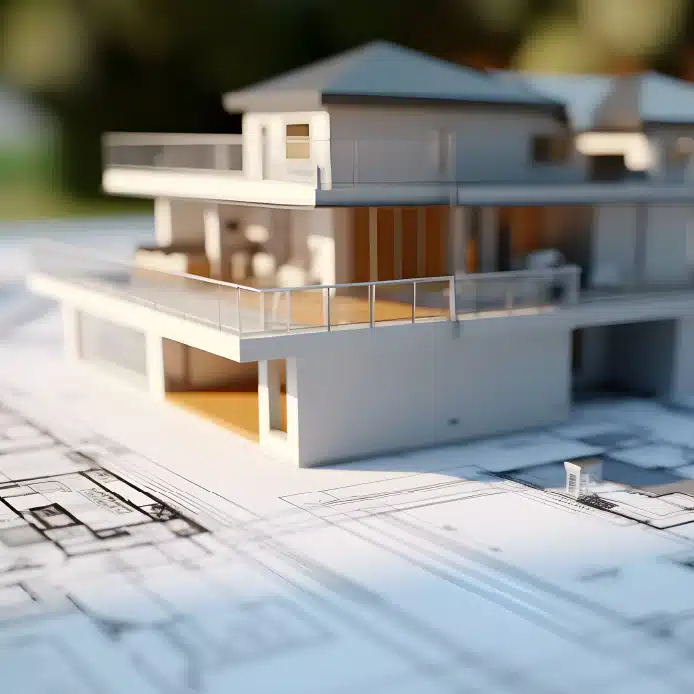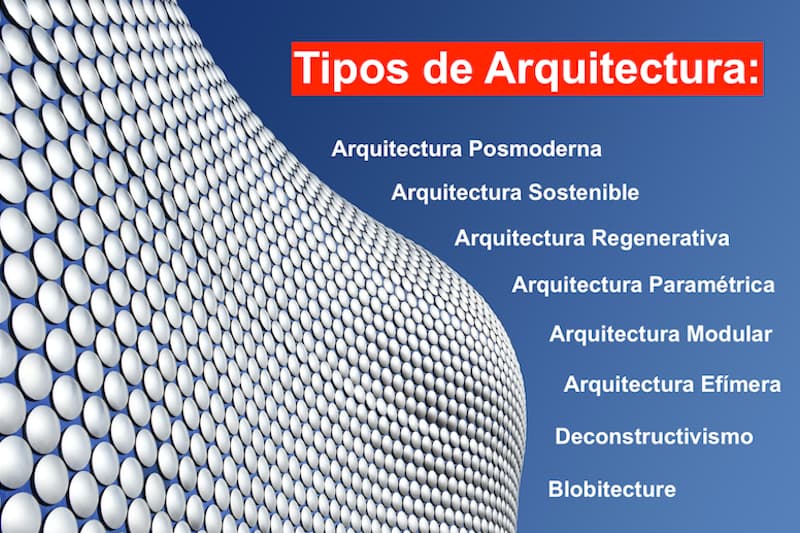- Inicio
- Arquitectura
- _RASCACIELOS
- __Burj Khalifa Dubai
- __Edificio Chrysler, NY
- _Estilos Arquitectónicos
- __Arquitectura Posmoderna
- __Deconstructivismo
- Arte
- _Arte Universal
- _Arte Contemporáneo
- __Serge Marshennikov
- __Damian Lechoszest
- __John Kacere
- _Escultura
- __Venus de Milo
- __Moisés de Miguel Ángel
- __Baldaquino de San Pedro
- __El rapto de Proserpina
- __La Verdad Velada
- __Perseo con cabeza de Medusa
- __Venus de Willendorf
- _Pintura
- __Capilla Sixtina
- __Cuadros Famosos
- __La Creación de Adán
- __Venus del Espejo Velázquez
- __Hipómenes y Atalanta
- __Venus Boticelli
- __Silla de van Gogh
- __Jugadores de Cartas Cézanne
- __Cabeza de Medusa Caravaggio
- __Impresionismo
- __Posimpresionismo
- _Historia
- __Edad Moderna
- Curiosidades
- _Arquitectura y Arte
- _Tumba de Miguel Ángel
- FRASES
- _Frases de la semana
- _Arquitectos
- _Escultores
- __Miguel Ángel Buonarroti
- __Bernini
- __Rodin
- _Pintores
- __Picasso
- __Vincent van Gogh
- __Cézanne
- __Claude Monet
- __Henri Matisse
- __René Magritte
- __Miguel Ángel
- CULTURA
- _Museos
- __Museo del Louvre
- Formación
- _Formación BIM Online
- _Cursos Domestika
- Más
- _ENTREVISTAS
- __Johannes Wesskmark
- __Nathan Zawaya
Lo más visto de la semana!!
RASCACIELOS DESTACADOS EN NY
Rascacielos Postmodernos en EEUU
DESTACADOS AIA 150
- 1.-EMPIRE STATE BUILDING
- 5.-GOLDEN GATE BRIDGE
- 9.-CHRYSLER BUILDING
- 12.-WASHINGTON MONUMENT
- 14.-THE GATEWAY ARCH
- 19.-THE WORLD TRADE CENTER
- 20.-BROOKLYN BRIDGE
- 29.-FALLINGWATER
- 39.-DELANO HOTEL
- 42.-SEARS TOWER
- 44.-WOOLWORTH BUILDING
- 59.-MILWAUKEE ART MUSEUM
- 61.-TRANSAMERICA PYRAMID
- 68.-THE NEW YORK TIMES TOWER
- 71.-HEARST TOWER
- 72.-FLATIRON BUILDING
- 73.-LAKE POINT TOWER
- 125.-CITICORP CENTER
- 129.-WEISMAN ART MUSEUM
- 132.-PENNZOIL PLACE
PUENTES DESTACADOS EN EL MUNDO
FEDERACIÓN MUNDIAL DE GRANDES TORRES
TORRES DESTACADAS EN EL MUNDO
RASCACIELOS DESTACADOS EN CHICAGO
OBRAS DESTACADAS EN EUROPA
OBRAS MAESTRAS DE LA HISTORIA DEL ARTE: ESCULTURA
- Constellation
- El hombre que camina
- El Ángel del Norte
- Chicago Picasso
- Torres de Ciudad Satélite
- La columna sin fin de Brancusi
- Monte Rushmore
- Cristo Redentor Brasil
- El Pensador de Rodin
- La Edad de Bronce (Rodin)
- Estatua de la Libertad
- La musa dormida Brancusi
- Eros y Psique Cánova
- Caballos de Marly
- Éxtasis Beata Ludovica Albertoni
- Fontana de Trevi
- Fuente de los Cuatro Ríos
- Éxtasis de Santa Teresa
- Fuente del Tritón
- David de Miguel Angel
- La Piedad de Miguel Ángel
- David de Donatello
- Laocoonte y sus hijos
- Victoria de Samotracia
- Cariátides
Especial ¿Sabías qué...?
OBRAS DESTACADAS EN ITALIA
Frases Célebres: Arquitectos Famosos
Frases Célebres: Pintores Famosos
Arquitectura, Escultura, Pintura, Ingeniería, Software-Programas de Diseño Arquitectónico: Metodología BIM, Revit, AutoCAD, 3ds max, Animación; Software de Adobe; Cursos online, Libros, Historia, Cultura, Timelapse y Dronelapse sobre Arquitectura y ciudades, Frases Célebres, Curiosidades, Rascacielos, Puentes, Edificios interesantes, Construcciones vanguardistas, Construcciones famosas, Diseño, Arte, Fotografía Arquitectónica / Architecture, Sculpture, Painting, Engineering, Software-Architectural Design Programs: BIM Methodology, Revit, AutoCAD, 3ds max, Animation; Adobe software; Online courses, Books, History, Culture, Timelapse and Dronelapse on Architecture and cities, Famous Phrases, Curiosities, Skyscrapers, Bridges, Interesting buildings, Avant-garde constructions, Famous constructions, Design, Art, Architectural Photography
¿Sabías qué...? de la semana con ilustraciones /
Did you know...? of the week with illustrations
( Curiosidades sobre Arte y Arquitectura ) Pág. 11

Aviso Legal. Copyright © José Miguel Hernández Hernández para todo el contenido incluido en este directorio. No usar sin permiso en ningún medio. Todos los derechos reservados www.jmhdezhdez.com
NEW WORLD TRADE CENTER NY
¿Sabías qué...? Una de las particularidades más interesantes de la Torre 1 (One World Trade Center) del Nuevo World Trade Center de Nueva York, es que la altura del parapeto de la azotea coincide con la de la antigua Torre Norte, 417 metros; de este modo y como curiosidad, el volumen de la también llamada Freedom Tower (Torre de la Libertad), tiene la medida exacta para que quepa en su interior. Asimismo, la altura estructural de la Torre 2 anexa de Norman Foster, —también llamada 200 Greenwich Street—, cuenta con la misma altura que la antigua Torre Sur, 415 metros, de modo que de alguna u otra forma la altura de las viejas Torres Gemelas persiste en el perfil de la ciudad. En este último edificio, Foster redujo su volumen en la cúspide mediante un plano en diagonal, de modo que mirando el edificio desde cualquier punto de la ciudad, el plano inclinado señala el lugar donde se encuentra la explanada del Memorial. Además, otro dato muy importante del bellísimo edificio postmoderno de la Torre 1, es que la altura simbólica de los 1776 pies, (541.30 metros), coincide con la fecha del año de la Independencia del País, que fue fundado el 4 de Julio de 1776.
Al término de su construcción en 2014, el One World Trade Center, diseño del arquitecto David Childs de la firma SOM, se convertirá, sólo por detrás del Burj Khalifa de Dubai de 828 metros de altura y el Makkah Royal Clock Tower Hotel de Arabia Saudita de 601 metros, en el tercer rascacielos más alto del mundo; asimismo, también se convertirá en el edificio exclusivo de oficinas más alto del mundo. Partiendo del volumen puro de un paralelepípedo, de las mismas proporciones que la antigua Torre Norte —diseño de Minoru Yamasaki y LERA—, el edificio va perdiendo sección en altura a medida que va ascendiendo debido a la disminución de los planos triangulares de la fachada que partiendo de las esquinas, van reduciendo su superficie y se van abriendo o cerrando hasta la cima. La percepción visual exterior nos invita a pensar que las diferentes plantas del edificio van girando en su ascensión, de modo que la planta cuadrada que parte desde la base, queda finalmente girada 45º en la cúspide.

Did you know...? One of the most interesting peculiarities of Tower 1 (One World Trade Center) of the New World Trade Center in New York, is that the height of the parapet of the roof matches that of the old North Tower, 417 meters, and thus As a curiosity, the volume also called Freedom Tower (Freedom Tower), is the exact measure to fit inside. Also, the structural height of Tower 2 annexed by Norman Foster, also called 200 Greenwich Street-, has the same height as the former South Tower, 415 meters, so that somehow or other the height of the old Torres Twin persists in the skyline. In the latter building, Foster reduced its volume at the top by a plane diagonally, so that looking at the building from anywhere in the city, the slope indicates the place where the concourse of Memorial. Also, another important fact of postmodern beautiful building of Tower 1, is that the symbolic height of 1,776 feet (541.30 meters), coincides with the date of the Independence of the country, which was founded on July 4 1776.
Upon completion of its construction in 2014, the One World Trade Center, designed by architect David Childs of SOM firm, will become just behind the Burj Khalifa in Dubai of 828 meters and the Makkah Royal Clock Tower Hotel in Saudi Arabia of 601 meters in the third tallest skyscraper in the world, also, will also become the exclusive office building world's tallest. From the pure volume of a cuboid of the same proportions as the old North Tower-design-LERA Minoru Yamasaki, the building section is losing height as it goes up due to decreased levels of the facade triangular starting at the corners, are reducing their surface and are opening or closing to the top. Visual perception outside invites us to think that the different floors of the building are turning in his ascension, so the square that goes from the base, is finally rotated 45 ° at the top.
Mile High Tower | The Illinois
¿Sabías qué...? El prestigioso arquitecto americano Frank Lloyd Wright (1867-1959) presentó en 1956, —sólo tres años antes de su muerte—, la propuesta de un nuevo rascacielos de una milla (1609,4 metros) de altura denominado "The Illinois". La obra, emplazada en la ciudad de Broadacre, no lejos de la ciudad de Chicago, que había proyectado el propio Wright en 1920 y que nunca se llegó a construir, se convertiría así con sus 1609,4 metros de altura estructural en el rascacielos más alto del mundo. Hay que recordar que en ese entonces todavía conservaba el récord de rascacielos más alto del mundo desde 1931 el Empire State Building de Nueva York de estilo Art Déco, con sus 381 metros de altura arquitectónica; Wright proyectaba un rascacielos cuatro veces más alto sólo 25 años más tarde de la inauguración del Empire State.
Con 528 plantas y un uso enteramente mixto, —debido a su enorme altura—, debía contar con ascensores de propulsión atómica. Su estructura, que había sido prevista en acero, haría que las oscilaciones fuesen notables, sobre todo en las plantas superiores. A pesar de este hecho, Wright se adelantó a su tiempo y fue uno de los arquitectos más visionarios de su época; no en vano, el también llamado Mile High Tower o Illinois Sky-City, presenta cierta similitud con el Burj Khalifa de Dubai de 828 metros, o la Kingdom Tower de Jeddah, actualmente en construcción, que superará la barrera de los 1.000 metros. El autor del Solomon R. Guggenheim de Nueva York o la Fallingwater (La Casa de la Cascada), presentó el interesante proyecto de "The Illinois" el 16 de octubre de 1956 en el Hotel Sherman de Chicago en una multitudinaria rueda de prensa.

Did you know...? The renowned American architect Frank Lloyd Wright (1867-1959) presented in 1956 —only three years before his death—, a proposed new skyscraper a mile (1609.4 meters) High called "The Illinois". The project, located in Broadacre City, not far from the city of Chicago, which Wright himself had projected in 1920 and never actually built, would thus become its structural height 1609,4 meters at the tallest skyscraper world. Remember that back then still held the record for world's tallest skyscraper from 1931 the Empire State Building in New York Art Deco, with its 381 meters high architectural, Wright planned a skyscraper four times as high as 25 years later than the opening of the Empire State.
With 528 floors and a fully mixed use,-because of its enormous height-, should have atomic-powered elevators. Its structure, which had been planned in steel would cause the oscillations were notable, especially on the upper floors. Despite this fact, Wright was ahead of his time and was one of the most visionary architects of his time, not surprisingly, also called Mile High Tower or Illinois Sky-City, has some similarity to the Burj Khalifa in Dubai 828 meters, or Jeddah Kingdom Tower, currently under construction, which will overcome the barrier of 1000 meters. The author of the Solomon R. Guggenheim New York or The Fallingwater presented the interesting project of "The Illinois" on October 16, 1956 at the Hotel Sherman in Chicago at a packed press conference.

Mile High Tower | The Illinois
Arquitecto Diseñador: Frank Lloyd Wright
Nombre oficial: The Illinois
Nombres alternativos: Mile High Tower,
Illinois Mile High Tower, Illinois Sky-City
Tipo: Rascacielos (Gigatall)
Uso: Residential, Hotel, Oficinas, Gobierno
Material estructural: Acero
Propuesta: 1956
Altura arquitectónica: 1609.4 metros / 5280 pies
Altura con antena: Height: 1739.2 metros / 5706 pies
Plantas sobre rasante: 528
Superficie: 18.46 Millones de pies cuadrados
Estado: Visión
Estilo arquitectónico: Moderno; Arquitectura Orgánica
Premio Pritzker
¿Sabías qué...? La medalla del Premio Pritzker lleva inscritas en su reverso las tres palabras "firmitas, utilitas, venustas", en alusión a los principios elementales que debía tener toda obra arquitectónica y que fueron formuladas por el arquitecto romano Marco Vitruvio: firmeza, utilidad y belleza. Su diseño fue creado por el arquitecto de la primera escuela de Chicago Louis Soullivan, considerado, —junto con William Le Baron Jenney—, padre de los rascacielos. El Premio Pritzker está considerado el galardón más importante que puede recibir un arquitecto a lo largo de toda su carrera. Se trata del equivalente al Premio Nobel. Se inició en el año 1979 y fue creado por la millonaria Familia Pritzker, dueña de una de las cadenas hoteleras más importantes del mundo, los Hoteles Hyatt.
Los dueños Jay A. Pritzker (1922-1999), y su mujer Cindy, conscientes de la importancia de la arquitectura en el mundo, decidieron fundar este premio, ya que, como residentes en Chicago, sabían de la importancia de esta, y en particular, en la de esta ciudad, cuna de los rascacielos por excelencia, donde importantísimos arquitectos como Louis Sullivan, Daniel Burnham, Frank Lloyd Wright o Mies van der Rohe, entre muchos otros, ya habían dejado su importante legado arquitectónico. El premio se entrega cada año alrededor del mundo y los arquitectos galardonados reciben un premio en metálico de $100.000 dólares, un certificado formal, y también desde el año 1987, el característico medallón de bronce.
.jpg)
Did you know...? The Pritzker Prize medal is inscribed on the reverse the three words "firmitas, utilitas, venustas" referring to the basic principles we should have all architectural work and were made by the Roman architect Vitruvius: strength, utility and beauty. Its design was created by the architect of the first school of Chicago Louis Soullivan, considered-along with William Le Baron Jenney, the father of the skyscraper. The Pritzker Prize is considered the highest award an architect can receive over his career. This is the equivalent to the Nobel Prize. It began in 1979 and was created by the billionaire Pritzker family, which owns one of the largest hotel chains in the world, Hyatt Hotels.
Owners Jay A. Pritzker (1922-1999), and his wife Cindy, aware of the importance of architecture in the world, decided to start this award because, as residents of Chicago, knew the importance of this, and in particular that of this city, birthplace of the skyscraper par excellence, where very important architects like Louis Sullivan, Daniel Burnham, Frank Lloyd Wright or Mies van der Rohe, among others, had already left their important architectural legacy. The award is given each year around the world and award-winning architects receive a cash prize of $ 100,000, a formal certificate, and since 1987, the characteristic bronze medallion.
Statue of Freedom Capitolio

¿Sabías qué...? En lo alto de la cúpula del Capitolio de Washington D.C., desde donde sin duda se debe sentir bastante vértigo, luce espléndida una bellísima escultura llamada "Statue of Freedom" (Estatua de la Libertad). La obra, de casi 6 metros de altura, mayor incluso que el famoso David de Miguel Ángel, y de estilo neoclásico realizada en bronce, fue creada por el artista Thomas Crawford. Se trata de una figura femenina clásica de pelo largo y suelto que luce un casco decorado con la cabeza de un águila, cresta y plumas, al que rodean 9 estrellas. La figura está vestida con un traje hasta los pies en el que destaca un broche bajo el pecho con la inscripción "US", en alusión a los Estados Unidos de Norteamérica. No obstante, su pose es serena y tranquila, pero a su vez espectante, como si tuviese su mirada fijada hacia el infinito.

The Statue of Freedom (La Estatua de la Libertad); Escultor-Artista: Thomas Crawford; Material: Bronce; Altura: 5,94 metros; Estilo: Neoclásico; Fundición en bronce: 1860 (montada en secciones); Colocación de la estatua sobre la cúpula del Capitolio: 1863; Restauración: 1993; Costo de la estatua: $23,796.82; Arquitecto de la cúpula del Capitolio US: Thomas Ustick Walter / The Statue of Freedom ; Sculptor-Artist: Thomas Crawford; Material: Bronze; Height: 5.94 meters; Style: Neoclassical; Cast in bronze: 1860 (mounted sections); Placement of the statue on the dome of the Capitol: 1863; Restoration: 1993; Statue Cost: $ 23,796.82; Architect of the Capitol dome US: Thomas Ustick Walter
La estatua porta en su mano derecha una espada envainada envuelta por un pañuelo, mientras, en su mano izquierda sostiene un escudo con la bandera de los Estados Unidos y una corona de laurel; además, 10 clavos de bronce con punta de platino repartidos por su tocado y hombros junto con el escudo, la protegen de posibles rayos. La escultura se erige espléndida a muchísima altura dominando el paisaje urbano de la ciudad de Washington D.C. sobre un pedestal de hierro fundido y un globo con el lema "E pluribus unum", frase en latín que se corresponde con uno de los principales lemas nacionales de los Estados Unidos, que significa « De muchos, uno » o también « Unidad en la Diversidad ».

arriba, imagen de los tres diseños llevados a cabo por el escultor Thomas Crawford hasta alcanzar el resultado definitivo que fueron realizados en barro en su taller de Roma; obviamente, los dos primeros modelos habían sido rechazados. / up image of the three designs carried out by the sculptor Thomas Crawford to reach the final outcome which were made of clay in his studio in Rome; obviously, the first two models had been rejected.
El artista murió repentinamente en 1857 antes de poder sacar la escultura de su taller y enviarla a Estados Unidos. No obstante, sí le dio tiempo a Crawford de convertir el modelo en yeso dividiéndolo en 5 piezas a tamaño natural. Fue su mujer quien se encargó de enviar por barco las 5 piezas de yeso hasta Washington posteriormente para fundirlas en bronce. El Capitolio se encuentra en la ciudad de Washington D.C, oficialmente denominado District of Columbia (Distrito de Columbia), y es un claro ejemplo de neoclasicismo arquitectónico estadounidense. Son varios los arquitectos que han colaborado en la construcción del edificio institucional que se desarrolló en diferentes fases, inaugurándose en 1800. La bellísima cúpula donde se asienta la Estatua de la Libertad, que finalizó en 1863, fue diseñada por el gran arquitecto Thomas Ustick Walter. El icónico edificio acoge las diferentes Cámaras del Congreso de los Estados Unidos, y es sin duda uno de los emblemas y símbolos del país.

arriba, tres obreros se retratan junto a la Estatua de la Libertad del Capitolio de Washington D.C. justo antes de su inauguración en 1863. Las piezas se fundieron en bronce en 1860, pero no fueron colocadas en lo alto de la Cúpula hasta diciembre de 1863. / above, three workers are portrayed by the Statue of Liberty Capitol Washington DC just before its opening in 1863. The pieces were cast in bronze in 1860, but were placed on top of the Dome until December 1863.
Al igual que ocurrió con la Estatua de la Libertad de Nueva York o la Cuádriga de la Puerta de Brandenburgo de Berlín, la estatua que corona el Capitolio de Washington D.C. ha adquirido con el paso del tiempo la pátina local (capa de óxido) con su característico color verde, ya que originariamente, al ser fundida en bronce, presentó color marrón. El monumento fue sometido a una exhaustiva restauración en 1993. Para ello, la escultura fue trasladada a las inmediaciones del Edificio del Capitolio en su lado este a nivel de la plaza para disfrute de los turistas mientras fueron llevadas a cabo las diferentes labores de limpieza.

Did you know...? At the top of the Capitol dome in Washington D.C., from which certainly should feel quite dizzy, it looks splendid a beautiful sculpture called "Statue of Freedom" (Statue of Liberty). The work, almost 6 meters high, higher even than the David by Michelangelo, and neoclassical style in bronze, was created by artist Thomas Crawford. This is a classical female figure long and loose hair who wears a helmet decorated with the head of an eagle crest and feathers, around nine stars. The figure is dressed in a suit to toe that highlights a brooch on the chest with the inscription "US" referring to the United States. However, his pose is calm and quiet, but in turn expectant, as if he had his gaze fixed toward infinity.

The statue carries in his right hand a sheathed sword wrapped in a handkerchief, while in his left hand holding a shield with the flag of the United States and a laurel wreath; plus 10 bronze nails platinum-tipped spread her headdress and shoulders with the shield, protect it from possible radiation. The sculpture stands tall Lovely lot dominate the cityscape of Washington DC on a pedestal made of cast iron and a balloon with the motto "E pluribus unum" Latin phrase which corresponds to a major national slogans of the United States, which means "Out of many, one" or even "Unity in diversity '.

A cast that had been stored for 25 years, was reassembled and restored to the basement of the office building Russell Senate, where publicly display again in January 1993. In late 2008 the plaster model was relocated the new Capitol Visitor Center, which looks splendid today in the Main Hall / Una réplica en yeso que había estado almacenada durante 25 años, fue vuelta a montar y restaurar en el sótano del Edificio de oficinas del Senado Russell, donde se volvió a exhibir públicamente en enero de 1993. A finales de 2008 el modelo en yeso fue reubicado al nuevo Centro de Visitantes del Capitolio, donde luce espléndido hoy en el Hall Principal

The artist died suddenly in 1857 before drawing the sculpture of his workshop and send it to the United States. However, it gave him time to Crawford to convert the plaster model by dividing it into five pieces at full size. It was his wife who was commissioned to send by ship 5 pieces of plaster to Washington later to merge them into bronze. The Capitol is located in Washington DC, officially called District of Columbia (DC), and is a clear example of American neo-classical architecture. Several architects have collaborated in building the institutional structure that developed in different phases, inaugurated in 1800. The beautiful dome where the Statue of Liberty, completed in 1863, sits was designed by the great architect Thomas Ustick Walter . The iconic building houses the various Houses of Congress of the United States, and is certainly one of the emblems and symbols of the country.

As happened with the Statue of Liberty in New York or the Quadriga of the Brandenburg Gate in Berlin, the statue overlooking the Capitol in Washington DC has acquired over time local patina (protective layer) with its characteristic green color, as originally to be cast in bronze, presented brown. The monument underwent a complete renovation in 1993. For this, the sculpture was moved to nearby Capitol Building on its east side to the plaza level for the enjoyment of tourists while you were held various cleanup.
Pictures Restoration process: / Imágenes del proceso de Restauración:




Págs. 1-2-3-4-5-6-7-8-9-10-11-
12-13-14-15-16-17-18
Related content / Contenido relacionado
¡Hola y bienvenido/a!
Gracias por visitar mi blog sobre Arquitectura y Arte: www.jmhdezhdez.com. Aquí comparto mi pasión por el diseño, la creatividad y las últimas tendencias en el mundo de la arquitectura. Si deseas seguir mi trabajo y proyectos, te invito a explorar la continuación natural de este blog en mi nuevo sitio web: ArquitecturaCarreras.com. En este nuevo espacio encontrarás artículos, recursos y novedades que estoy seguro te inspirarán. ¡Te espero allí con muchas novedades!
Gracias por visitar mi blog sobre Arquitectura y Arte: www.jmhdezhdez.com. Aquí comparto mi pasión por el diseño, la creatividad y las últimas tendencias en el mundo de la arquitectura. Si deseas seguir mi trabajo y proyectos, te invito a explorar la continuación natural de este blog en mi nuevo sitio web: ArquitecturaCarreras.com. En este nuevo espacio encontrarás artículos, recursos y novedades que estoy seguro te inspirarán. ¡Te espero allí con muchas novedades!


Arquitectura y Tecnología al servicio del diseño inteligente.
Esta guía esencial para Smart Homes te muestra cómo integrar dispositivos inteligentes en viviendas contemporáneas, mejorando el confort, la eficiencia energética y el diseño funcional. Ideal para arquitectos, interioristas y entusiastas del arte del habitar.
👉 Descubre la guía completa
Fotografía de Arquitectura

Directorio de Fotógrafos de Arquitectura en España: Descubre a los Mejores Expertos en Fotografía Arquitectónica para Documentar tus Proyectos y Obras

Fotografía Arquitectónica: La Guía Definitiva para Capturar Diseño, Estética y Función de Edificios y Estructuras

Fotografía y Vídeo Timelapse

El Rol del Fotógrafo de Arquitectura

Cámaras Réflex y Objetivos Tilt-Shift para Fotografía de Arquitectura
FORMACIÓN BIM MÁS DEMANDADA
Alta tasa de empleabilidad: 8 de cada 10 alumnos de RF AECO con quienes colaboramos logra encontrar empleo antes de finalizar su Curso o Máster. Obtén más información → aquí o descubre la renovada Bolsa de Empleo para alumnos y antiguos alumnos (ALUMNI). A continuación te mostramos los 4 cursos que más demandan los profesionales en la actualidad 2024-2025:

➔ Curso Modelador BIM, especialista Revit – BIM Specialist
Curso de modelador BIM y especialista en Revit, formación avanzada en BIM para profesionales de la construcción. ¡Plazas limitadas! ¡No te quedes fuera!

➔ Curso Online Revit Architecture: Essentials v. 2024
Curso online de Revit Architecture Essentials v. 2024, introducción al software Revit para arquitectura.

➔ Curso AutoCAD Plant 3D: Modelamiento v. 24
Curso de AutoCAD Plant 3D versión 24, modelamiento avanzado para proyectos de plantas industriales.

➔ Diseño y Cálculo de Estructuras con CYPE
Curso de diseño y cálculo de estructuras con CYPE, formación en software de ingeniería estructural.
Muy importante! Si tienes dudas o no tienes claro cuál es el curso o máster que más se adapta a tu perfil profesional, escríbeme un e-mail a info@jmhdezhdez.com y estaré encantado de orientarte.

➔ Curso Modelador BIM, especialista Revit – BIM Specialist
Curso de modelador BIM y especialista en Revit, formación avanzada en BIM para profesionales de la construcción. ¡Plazas limitadas! ¡No te quedes fuera!

➔ Curso Online Revit Architecture: Essentials v. 2024
Curso online de Revit Architecture Essentials v. 2024, introducción al software Revit para arquitectura.

➔ Curso AutoCAD Plant 3D: Modelamiento v. 24
Curso de AutoCAD Plant 3D versión 24, modelamiento avanzado para proyectos de plantas industriales.

➔ Diseño y Cálculo de Estructuras con CYPE
Curso de diseño y cálculo de estructuras con CYPE, formación en software de ingeniería estructural.
Muy importante! Si tienes dudas o no tienes claro cuál es el curso o máster que más se adapta a tu perfil profesional, escríbeme un e-mail a info@jmhdezhdez.com y estaré encantado de orientarte.
DESTACADOS EN ARQUITECTURACARRERAS.COM

Estilos Arquitectónicos Modernos: Un Viaje a Través de la Creatividad y la Innovación

ARQUITECTURA CARRERA: Descubre todas las Opciones de la Carrera en Arquitectura y Grados en España

Comparativa de las Mejores Universidades de Arquitectura del Mundo: Internacional, Europa, LATAM

Los Mejores Libros de Arquitectura para Arquitectos

Libros para Estudiar Arquitectura

Libros para Arquitectos Principiantes: Guías y Recursos Esenciales para Comenzar tu Carrera

Los Mejores Libros de Arquitectura para Estudiantes durante la Carrera

Era Digital de la Construcción: Innovaciones Tecnológicas en Arquitectura y Edificación

Comparativa de Los Mejores Ordenadores para Arquitectos en 2024

Las Mejores Laptops para Arquitectura en 2024

Los Mejores Ordenadores de Arquitectura para Estudiantes

Significado de: Términos Clave sobre Arquitectura, Ingeniería y Construcción

Arquitectos: Descubre el Mejor Directorio de Arquitectos que podrás encontrar en Internet (Sólo en AC)

Tipos de Arquitectura: Explorando Más Allá de los Diseños Convencionales

FRASES DE ARQUITECTOS

Roles Arquitectura y Construcción (Profesiones Arquitectura)

Certificaciones para Arquitectos: Avanzando en la Excelencia Profesional

Roles BIM más Demandados en la Industria de la Construcción y el Sector AECO

Software BIM para Proyectos de Arquitectura y Construcción

Tecnología BIM: Beneficios y Ventajas en el sector AECO: Arquitectura, Ingeniería, Construcción y Operaciones

Modelo BIM

Modelo MEP

BIM 3D 4D 5D 6D 7D

AECO: Sector Arquitectura, Ingeniería, Construcción y Operaciones

Avances Tecnológicos en la Industria de la Construcción

Normas Técnicas de Edificación

!Explora el Mejor Directorio de Construcción! 🚧 🏗️ 👷♂️ (Sólo en ArquitecturaCarreras.com)
Categorías destacadas en el blog!!
▷ LA REVOLUCIÓN DEL BIM.. CURSOS BIM RECOMENDADOS!! RENDERS' FACTORY AECO..

CURSOS BIM ONLINE

▷ Formación BIM
▷ Master en BIM Online
▷ Máster BIM Internacional Oficial Autodesk
▷ Master BIM Manager Online
▷ BIM Expert
▷ BIM Specialist
▷ Curso Revit Arquitectura
▷ Curso familias Revit
▷ De Revit a 3ds Max: Renderizado con V-ray
▷ Curso Revit Estructuras
▷ Curso Revit MEP

Conoce todos los aspectos de la Metodología BIM y Revit
TODOS LOS CURSOS Y MÁSTERES BIM
→ MÁSTERS
→ BIM
→ AUTODESK
→ CYPE
→ DISEÑO MECÁNICO
▷ CURSOS ONLINE RECOMENDADOS!!

- CATEGORÍAS DE CURSOS ONLINE
▷ Formación online
▷ Cursos online
▷ Domestika Cursos
▷ Domestika cupón descuento
▷ Cursos de Arquitectura online
▷ Cursos online de Ilustración
▷ Cursos online de Diseño gráfico
▷ Cursos online de Fotografía y Vídeo
▷ Cursos online de 3D y Animación
▷ Cursos de Diseño online
▷ Cursos online de Dibujo
▷ Cursos online de Bellas Artes
▷ Cursos online de Dirección de Arte
- CURSOS ONLINE DOMESTIKA (POR SOFTWARE)
▷ AutoCAD
▷ SketchUp
▷ 3ds Max
▷ Adobe Photoshop
▷ Adobe Illustrator
▷ Adobe After Effects
▷ Adobe Lightroom
▷ Cinema 4D
▷ Adobe Indesign
LOS MEJORES CURSOS ONLINE PARA CREATIVOS | CURSOS DOMESTIKA
- ÚLTIMAS RESEÑAS CURSOS DOMESTIKA
 ▷ Curso Revit Online, por Majo Mora
▷ Curso Revit Online, por Majo Mora
 ▷ Curso de AutoCAD Online, por Isabel Martínez Abascal
▷ Curso de AutoCAD Online, por Isabel Martínez Abascal
 ▷ Curso SketchUp online, por Alejandro Soriano
▷ Curso SketchUp online, por Alejandro Soriano
 ▷ Curso Infoarquitectura 3D, por Amo Visual 3D
▷ Curso Infoarquitectura 3D, por Amo Visual 3D
 ▷ Curso de Lumion, por Salva Moret
▷ Curso de Lumion, por Salva Moret
MARAVILLAS DEL MUNDO
- CRISTO REDENTOR, BRASIL
- CHICHEN ITZÁ, MEXICO
- COLISEO DE ROMA, ITALIA
- CIUDAD DE PETRA, JORDANIA
- PIRÁMIDES DE GIZA, EGIPTO
- ÓPERA DE SÍDNEY, AUSTRALIA
- EIFFEL TOWER, FRANCIA
- STATUE OF LIBERTY, EE.UU.
- MOÁIS DE LA ISLA DE PASCUA, CHILE
- ACRÓPOLIS DE ATENAS, GRECIA
- TORRE DE PISA, ITALIA
- GOLDEN GATE BRIDGE, EE.UU.
- EMPIRE STATE BUILDING, EE.UU.
- BIG BEN, INGLATERRA
- TORRES PETRONAS, MALASIA
- PUENTE DE CARLOS IV, REPÚBLICA CHECA
- MONTE RUSHMORE, ESTADOS UNIDOS
- MUSEO GUGGENHEIM BILBAO, ESPAÑA
- HOTEL BURJ AL ARAB, UAE
- CAPILLA SIXTINA, ITALIA
- CN TOWER DE TORONTO, CANADÁ
Edificios altos destacados en USA
- ONE WORLD TRADE CENTER, NEW YORK
- 8 SPRUCE STREET, NEW YORK
- AQUA TOWER, CHICAGO
- TRUMP CHICAGO TOWER, CHICAGO
- BANK OF AMERICA TOWER, NEW YORK
- THE CHICAGO SPIRE, (OBRA PARALIZADA)
- THE NEW YORK TIMES TOWER, NEW YORK
- HEARST TOWER, NEW YORK
- ESPIRITO SANTO PLAZA, MIAMI
- MIAMI TOWER, MIAMI
- FOUNTAIN PLACE, DALLAS
- CITICORP CENTER, NEW YORK
- PENNZOIL PLACE, HOUSTON
- SEARS TOWER, CHICAGO
- OLD WORLD TRADE CENTER, NEW YORK
- TRANSAMERICA PYRAMID, SAN FRANCISCO
- JOHN HANCOCK CENTER, CHICAGO
- LAKE POINT TOWER, CHICAGO
- MARINA CITY, CHICAGO
- SEAGRAM BUILDING, NEW YORK
- MILE HIGH TOWER | THE ILLINOIS, (VISIÓN)
- AMERICAN INTERNATIONAL, NEW YORK
- EMPIRE STATE BUILDING, NEW YORK
- 570 LEXINGTON AVENUE, NEW YORK
- CHRYSLER BUILDING, NEW YORK
- WOOLWORTH BUILDING, NEW YORK
- FLATIRON BUILDING, NEW YORK
- HOME INSURANCE BUILDING, CHICAGO
Entradas especiales
MONUMENTOS DESTACADOS EN EL MUNDO
- HSB TURNING TORSO
- CN TOWER, CANADÁ
- ARCO DE ST. LOUIS, MISSOURI
- SPACE NEEDLE, SEATTLE
- TORRES DE CIUDAD SATÉLITE, MÉXICO
- MEMORIAL MONTE RUSHMORE, DAKOTA DEL SUR
- COLUMNA SIN FIN, RUMANÍA
- GOLDEN GATE BRIDGE, SAN FRANCISCO
- EMPIRE STATE BUILDING, NUEVA YORK
- CHRYSLER BUILDING, NUEVA YORK
- CRISTO REDENTOR, RIO DE JANEIRO
- LA PEDRERA, BARCELONA
- EL PENSADOR DE RODIN, PARÍS
- EDIFICIO FLATIRON, NUEVA YORK
- TOWER BRIDGE (PUENTE TORRE), LONDRES
- TORRE EIFFEL, PARÍS
- ESTATUA DE LA LIBERTAD, NUEVA YORK
- HOME INSURANCE BUILDING, CHICAGO
- BROOKLYN BRIDGE, NUEVA YORK
- WASHINGTON MONUMENT, WASHINGTON D.C.
- STATUE OF FREEDOM CAPITOLIO, WA DC
- BIG BEN, LONDRES
- PUERTA DE BRANDENBURGO, BERLÍN
- FONTANA DI TREVI, ROMA
- FUENTE DE LOS CUATRO RÍOS, ROMA
- ÉXTASIS DE SANTA TERESA, ROMA
- FUENTE DEL TRITÓN, ROMA
- PUENTE DE RIALTO, VENECIA
- TUMBA DE MICHELANGELO, FLORENCIA
- CAPILLA SIXTINA, ROMA
- DAVID DE MIGUEL ÁNGEL, FLORENCIA
- PUENTE DE CARLOS, PRAGA
- PONTE VECCHIO, FLORENCIA
- TORRE DE PISA, LA TOSCANA
- MOÁIS DE LA ISLA DE PASCUA, CHILE
- CHICHEN ITZÁ, YUCATÁN
- LAOCOONTE Y SUS HIJOS, ROMA
- COLISEO DE ROMA, ITALIA
- VICTORIA DE SAMOTRACIA, MUSEO DEL LOUVRE
- VENUS DE MILO
- CARIÁTIDES DE ATENAS
- ACRÓPOLIS DE ATENAS, GRECIA
- PETRA, JORNANIA
- EL ESCRIBA SENTADO DEL LOUVRE
- PIRAMIDES DE GIZA, EGIPTO
¿Sabías qué...? muy interesantes! Curiosidades: Arquitectura, Escultura, Pintura y Arte
PUENTES VANGUARDISTAS DESTACADOS
- Infinity Bridge, Stockton
- Juscelino Kubitschek Bridge, Brasilia
- Millenium Bridge, London
- Golden Gate Bridge, San Francisco
- Brooklyn Bridge, New York City
- Megyeri Bridge, Budapest
- Millau Viaduct, Aveyron
- Harilaos Trikoupis Bridge, Athens
- Seri Wawasan Bridge, Putrajaya
- Reiman Bridge, Milwaukee
- UFO Bridge, Bratislava
- Puente del Alamillo, Sevilla
- Sundial Bridge, Redding
- Reggio Emilia Bridges, Bolonia
- Puente del Tercer Milenio, Zaragoza
- Campo Volantin Footbridge, Bilbao
- Puente de la Barqueta, Sevilla
- Humber River Bridge, Toronto
- Puente Bach de Roda, Barcelona
- BP Bridge, Chicago
- Pasarela de la Arganzuela, Madrid
- Erasmus Bridge, Rotterdam
- Puente de la Mujer, Buenos Aires
- Gateshead Millenium Bridge, London
CUADROS FAMOSOS (PINTURA)
- El Guernica (Picasso)
- La Danza (Henri Matisse)
- El beso (Gustav Klimt)
- El grito (Edvard Munch)
- La Noche estrellada (Vincent van Gogh)
- Un baño en Asnières (Georges Seurat)
- Impresionismo (Pintores destacados)
- La Libertad guiando al pueblo (Delacroix)
- Saturno devorando a un hijo (Goya)
- La Joven de la Perla (Vermeer)
- La Venus del espejo (Diego Velázquez)
- La lechera (Vermeer de Delft)
- La ronda de noche (Rembrandt)
- Hipómenes y Atalanta (Guido Reni)
- La Vocación de San Mateo Caravaggio
- Cabeza de Medusa (Caravaggio)
- Frescos de la Capilla Sixtina (Miguel Ángel)
- Almuerzo sobre la hierba de Manet
REFERENCIAS PARA ARQUITECTOS Y ESTUDIANTES DE ARQUITECTURA Y DISEÑO
Arte Contemporáneo
- Johannes Wessmark (Hiperrealismo)
- Jaume Plensa
- Nathan Sawaya (Arte LEGO)
- Serge Marshennikov (Hiperrealismo)
- Escultura Calatrava Chicago
- Bou (Santiago Calatrava)
- Alberto Giacometti
- Frases Pablo Picasso
- El Ángel del Norte (Antony Gormley)
- El hombre que camina I (Alberto Giacometti)
- Chicago Picasso
- Torres Satélite (Luis Barragán)
- John Kacere (Fotorrealismo)
- El Guernica de Picasso
- La musa dormida (Brancusi)
- El Arte de: Damian Lechoszest
- Frescos de la Capilla Sixtina (Miguel Ángel)
- Almuerzo sobre la hierba de Manet
Mitología, Historia, Leyendas
- Lady Godiva
- Eros y Psique
- Hipómenes y Atalanta (Guido Reni)
- La Creación de Adán de Miguel Ángel
- La Piedad de Miguel Ángel
- Arquitectura Postmoderna
- Frases Gaudí
- Los Rascacielos más altos del Mundo
- Todos los ¿Sabías qué...?
- Deconstructivismo
- Burj Khalifa
- Obras destacadas en: El Museo del Louvre
- Famous phrases
- Pensador de Rodin
- Frases Oscar Niemeyer
www.jmhdezhdez.com
(Blog sobre Arquitectura y Arte)
Copyright ©
José Miguel Hernández Hernández. All rights reserved






























































